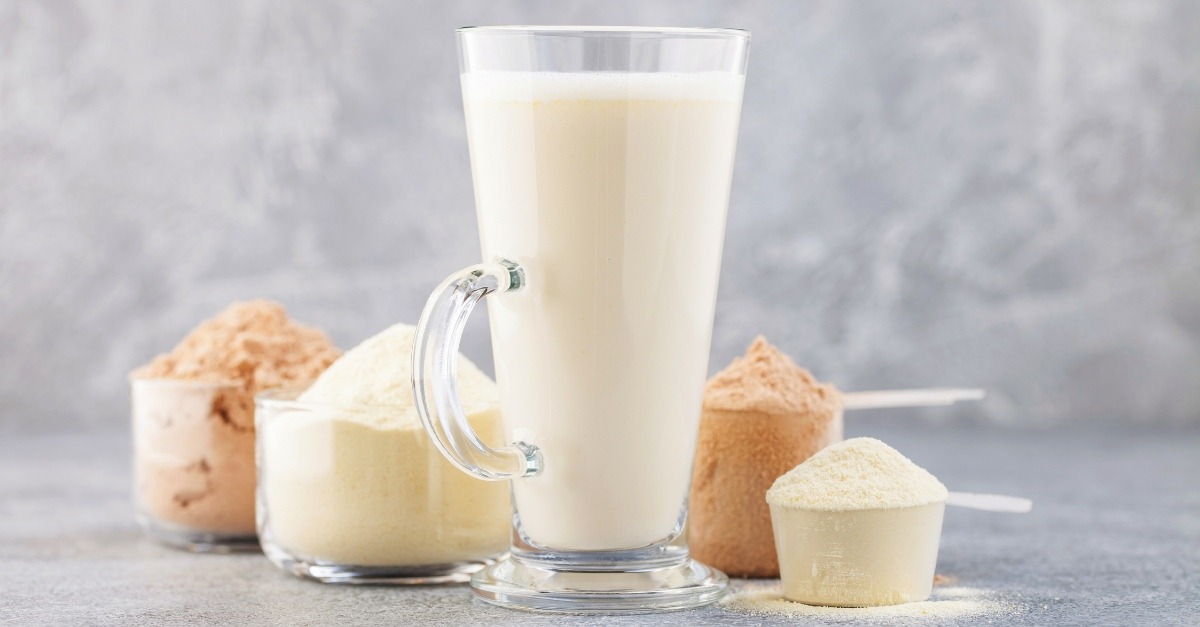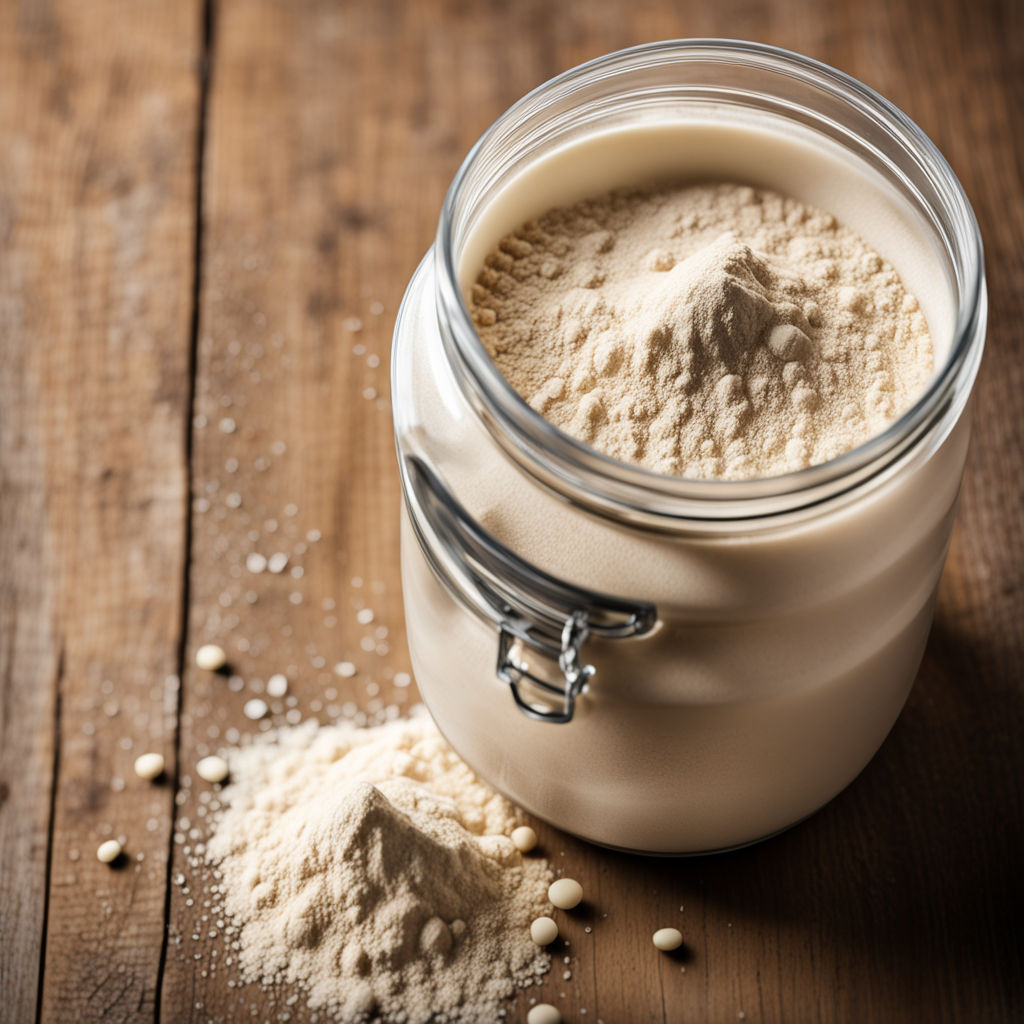Introduction

Whey protein is a high-quality protein derived from milk during the cheese-making process. It is a complete protein, meaning it contains all nine essential amino acids necessary for human dietary needs. Due to its high bioavailability, whey protein is easily absorbed and utilized by the body, making it a popular supplement for individuals seeking to enhance their protein intake. You can learn more about the basics of whey protein from sources like WebMD.
Importance in Nutrition and Fitness
Whey protein plays a critical role in both nutrition and fitness. It supports muscle growth and repair, which is essential for athletes and those engaging in regular physical activity. Consuming whey protein post-workout can help accelerate muscle recovery and reduce muscle soreness, allowing for more effective training sessions. Additionally, whey protein can aid in weight management by promoting satiety and preserving lean muscle mass during calorie-restricted diets. For more insights into the benefits of whey protein in fitness, refer to articles from Verywell Fit.
In summary, whey protein is a versatile supplement that supports various aspects of health and fitness, making it a valuable addition to a balanced diet.
What is Whey Protein?

Whey protein is a byproduct of the cheese-making process. When milk is curdled and strained, the liquid that remains is called whey. This liquid is rich in proteins, primarily in the form of beta-lactoglobulin, alpha-lactalbumin, and serum albumin. Historically, whey was often discarded or used as animal feed until its nutritional value was fully recognized. Today, whey protein is processed and marketed as a dietary supplement widely used by athletes, bodybuilders, and health enthusiasts. For a more detailed definition and historical background, check out Wikipedia’s entry on whey protein.
Process of Extraction from Milk
The extraction of whey protein involves several steps:
- Milk Collection: Fresh milk is collected from cows.
- Coagulation: The milk is then heated and an enzyme called rennet is added to initiate coagulation, separating the milk into curds (solid) and whey (liquid).
- Whey Separation: The liquid whey is drained off, leaving the curds behind to be processed into cheese.
- Filtration: The liquid whey undergoes various filtration processes to remove fats and carbohydrates, concentrating the protein content. This includes microfiltration and ultrafiltration.
- Drying: The concentrated whey protein is then dried into a powder form using techniques such as spray drying.
- Packaging: The whey protein powder is packaged and prepared for distribution.
This process ensures that the final product is rich in high-quality protein while minimizing lactose and fat content. For a detailed explanation of the extraction and production process, visit Milk Facts and Science Direct.
Types of Whey Protein
Whey protein can be classified into three main types, each with unique characteristics:
Whey Protein Concentrate (WPC)
Whey Protein Concentrate is the least processed form of whey protein. It contains a lower percentage of protein compared to other types, usually ranging from 30% to 80%. The rest of the composition includes lactose, fats, and minerals. WPC is often favored for its balance of nutrients and cost-effectiveness. It retains more of the beneficial nutrients found in whey, such as immunoglobulins and lactoferrin. For more information on WPC, you can refer to Bodybuilding.com.
Whey Protein Isolate (WPI)
Whey Protein Isolate undergoes further processing to remove most of the lactose and fat, resulting in a product that is typically 90% or more protein by weight. This makes it an excellent option for those who are lactose intolerant or looking for a low-carb protein source. WPI is rapidly absorbed and is often used by athletes and bodybuilders for quick post-workout recovery. Detailed insights on WPI can be found at Healthline.
Whey Protein Hydrolysate (WPH)

Whey Protein Hydrolysate is pre-digested, meaning it has been partially broken down to enhance absorption and digestion. This process involves the hydrolysis of protein chains into smaller peptides. WPH is often used in medical protein supplements and infant formulas due to its high digestibility and lower allergenic potential. It is ideal for individuals with digestive issues or those seeking a rapid protein source. For further reading on WPH, visit Medical News Today.
Comparison of Types
- Protein Content: WPI has the highest protein content (90%+), followed by WPH and WPC.
- Lactose and Fat Content: WPI and WPH have minimal lactose and fat, making them suitable for lactose-intolerant individuals, whereas WPC contains higher levels.
- Processing: WPC is the least processed, retaining more of the natural nutrients, while WPI and WPH undergo additional processing for higher purity and digestibility.
- Cost: WPC is generally the most affordable, with WPI and WPH being more expensive due to the additional processing steps.
Each type of whey protein serves different purposes and can be selected based on individual nutritional needs and preferences. For a comparative overview, you can check out Verywell Fit.
Benefits of Whey Protein
Whey protein offers a range of benefits that support various aspects of health and fitness:
Muscle Growth and Repair
Whey protein is widely recognized for its role in muscle growth and repair. It is rich in branched-chain amino acids (BCAAs), particularly leucine, which is crucial for muscle protein synthesis. Studies have shown that whey protein supplementation, when combined with resistance training, can significantly enhance muscle mass and strength. This makes it an essential supplement for athletes and bodybuilders aiming to optimize their training outcomes. More information on the impact of whey protein on muscle growth can be found in this study.
Weight Management
Whey protein can be an effective tool for weight management. It promotes satiety, reducing overall calorie intake and aiding in weight loss. Whey proteins help maintain lean muscle mass during calorie-restricted diets, which is crucial for sustaining metabolic rate. Research has indicated that incorporating whey protein into meals can enhance weight loss results when combined with a balanced diet and exercise regimen. For further reading on whey protein and weight loss, refer to this article.
Immune System Support
Whey protein contains immunoglobulins and lactoferrin, which support the immune system. These components have antimicrobial and antiviral properties, enhancing the body’s ability to fight infections. Regular consumption of whey protein can contribute to overall immune health, making it a valuable addition to the diet, especially for individuals under physical stress from intense exercise. More details on this can be found in studies on whey protein and immunity.
Other Health Benefits
- Reduced Blood Pressure: Whey proteins contain bioactive peptides that have been shown to lower blood pressure in individuals with hypertension. This effect is attributed to the inhibition of angiotensin-converting enzyme (ACE), similar to the mechanism of some blood pressure medications.
- Anti-Inflammatory Properties: Chronic inflammation is linked to various health conditions. Whey protein supplementation has been shown to reduce markers of inflammation, contributing to improved overall health. This is particularly beneficial for individuals with inflammatory conditions or those undergoing intensive physical activity.
For comprehensive information on these health benefits, you can refer to Healthline’s article on whey protein benefits.
How to Use Whey Protein

Incorporating whey protein into your diet can enhance your nutritional intake and support your fitness goals:
Recommended Daily Intake
The recommended daily intake of whey protein can vary based on individual goals, activity levels, and dietary needs. For general health and fitness, a typical recommendation is 1-2 scoops (approximately 25-50 grams) per day. For those engaged in resistance training or intense exercise, higher intake levels may be beneficial to support muscle recovery and growth. According to various studies, consuming around 1.6 to 2.2 grams of protein per kilogram of body weight is optimal for muscle protein synthesis and overall health.
Best Times to Consume
Timing can play a crucial role in the effectiveness of whey protein supplementation. Some of the best times to consume whey protein include:
- Post-Workout: Consuming whey protein immediately after resistance training or other forms of exercise can help speed up muscle recovery and promote muscle growth. This is when your muscles are most receptive to nutrient absorption.
- Morning: Starting your day with a whey protein shake can provide a quick and easy source of protein to fuel your day.
- Between Meals: Using whey protein as a snack can help curb hunger and maintain steady energy levels throughout the day.
For more details on optimal protein timing, you can refer to this study.
Mixing and Preparation Tips
Whey protein is highly versatile and can be mixed with various liquids and foods. Here are some tips for preparing whey protein:
- Shakes and Smoothies: Mix whey protein with water, milk, or a dairy-free alternative. Add fruits, vegetables, and healthy fats like nut butters or avocado for a nutritious smoothie.
- Blending: Use a blender to ensure a smooth consistency and to incorporate additional ingredients.
- Shaker Bottle: For convenience, use a shaker bottle to mix whey protein powder with liquid. This is especially useful for post-workout shakes.
Incorporating into Recipes
Whey protein can be easily incorporated into various recipes, making it a versatile addition to your diet. Here are a few ideas:
- Smoothies: Add a scoop of whey protein to your favorite smoothie recipe for an extra protein boost. Combine fruits, leafy greens, yogurt, and whey protein for a balanced meal replacement.
- Baked Goods: Whey protein can be added to pancakes, muffins, and protein bars. Replace a portion of the flour with whey protein powder to increase the protein content of your baked goods.
- Oatmeal: Stir a scoop of whey protein into your morning oatmeal for a high-protein breakfast.
- Protein Balls: Combine whey protein with oats, nut butter, honey, and other ingredients to make no-bake protein balls.
For a variety of recipes and ideas, visit Bodybuilding.com.
In summary, incorporating whey protein into your diet is straightforward and can significantly enhance your nutritional intake, especially when combined with regular resistance training and a balanced diet. Proper timing, preparation, and creative recipe ideas can help you maximize the benefits of whey protein supplementation.
Choosing the Right Whey Protein
When selecting a whey protein supplement, consider the following factors:
Factors to Consider
- Dietary Restrictions: If you are lactose intolerant, look for whey protein isolate or hydrolysate, as these contain minimal lactose. For those with allergies or specific dietary preferences (e.g., vegan), alternative protein sources like pea or soy protein may be more suitable.
- Goals: Your fitness and health goals will influence your choice. For muscle growth and recovery, whey protein isolate or hydrolysate is ideal due to its high protein content and quick absorption. For general health and balanced nutrition, whey protein concentrate might be sufficient and more cost-effective.
- Flavor and Taste: Choose a flavor you enjoy, as this will encourage consistent use. Many brands offer a variety of flavors, from chocolate to vanilla to more exotic options.
For more guidance on selecting the right whey protein based on your needs, visit Healthline.
Reading Labels and Understanding Ingredients
Understanding the labels on whey protein products is crucial to making an informed choice. Here’s what to look for:
- Protein Content: Check the amount of protein per serving. Isolate and hydrolysate typically offer higher protein percentages compared to concentrate.
- Ingredients List: A shorter ingredients list usually indicates fewer additives and fillers. Look for whey protein as the first ingredient.
- Added Sugars and Artificial Sweeteners: Be mindful of added sugars and artificial sweeteners, which can affect the nutritional quality and taste.
- Allergens: Check for potential allergens such as soy, gluten, or lactose if you have sensitivities.
For a comprehensive guide to reading protein labels, refer to Bodybuilding.com.
Brand Comparisons and Recommendations
Choosing a reputable brand ensures quality and safety. Here are a few top-rated whey protein brands based on user reviews and quality standards:
- Optimum Nutrition Gold Standard 100% Whey: Known for its high-quality protein and great taste. It’s a reliable choice for both beginners and seasoned athletes.
- Dymatize ISO100: This hydrolyzed whey protein isolate is favored for its rapid absorption and minimal lactose content, making it ideal for post-workout recovery.
- BSN Syntha-6: Offers a blend of different protein sources, providing sustained release of amino acids. It’s suitable for those looking for a versatile protein supplement.
Comparing brands involves looking at the protein content, ingredient quality, taste, price, and user reviews. For detailed brand comparisons and recommendations, check out Verywell Fit and Men’s Health.
Potential Side Effects and Considerations
While whey protein is generally safe for most people, some individuals may experience side effects, particularly with high doses. Common side effects include:
Common Side Effects
- Digestive Issues: Some people may experience bloating, gas, stomach cramps, and diarrhea. These issues are often due to lactose intolerance or sensitivity to the high protein content.
- Kidney and Liver Function: In individuals with pre-existing kidney or liver conditions, excessive protein intake can put additional strain on these organs. It is essential to consult with a healthcare provider if you have such conditions.
For a detailed overview of common side effects, refer to Healthline’s article on whey protein.
Allergies and Lactose Intolerance
Whey protein is derived from milk, so it contains lactose. Individuals with lactose intolerance may experience digestive discomfort when consuming whey protein concentrate, which has higher lactose content. Whey protein isolate and hydrolysate contain much less lactose and may be better tolerated. Additionally, some individuals may have a milk allergy, which could cause allergic reactions ranging from mild to severe. It’s important to recognize the symptoms of lactose intolerance and milk allergies and choose a protein supplement accordingly.
For more information on managing lactose intolerance and milk allergies, visit Mayo Clinic.
Interactions with Medications
Whey protein may interact with certain medications, potentially affecting their efficacy. Key considerations include:
- Antibiotics: Whey protein can reduce the absorption of some antibiotics, such as tetracycline and quinolone antibiotics, due to its high calcium content. It is advisable to take these medications separately from whey protein supplements.
- Osteoporosis Medications: Some osteoporosis medications, such as bisphosphonates, may have reduced absorption when taken with protein supplements.
- Anti-diabetic Medications: Whey protein can affect blood sugar levels, which may interfere with medications used to manage diabetes.
If you are taking any medications, it’s crucial to discuss whey protein supplementation with your healthcare provider to avoid potential interactions. For a comprehensive list of potential interactions, refer to WebMD.
